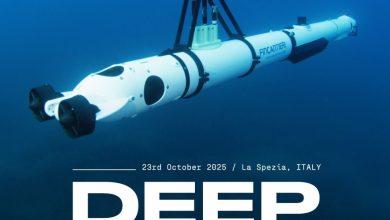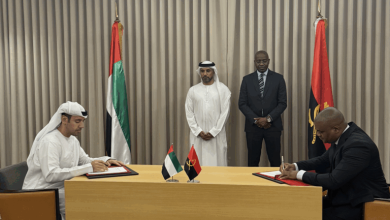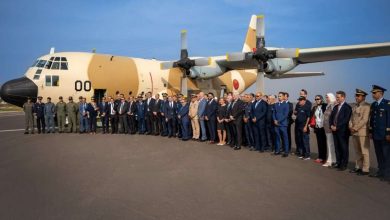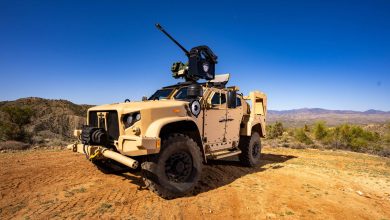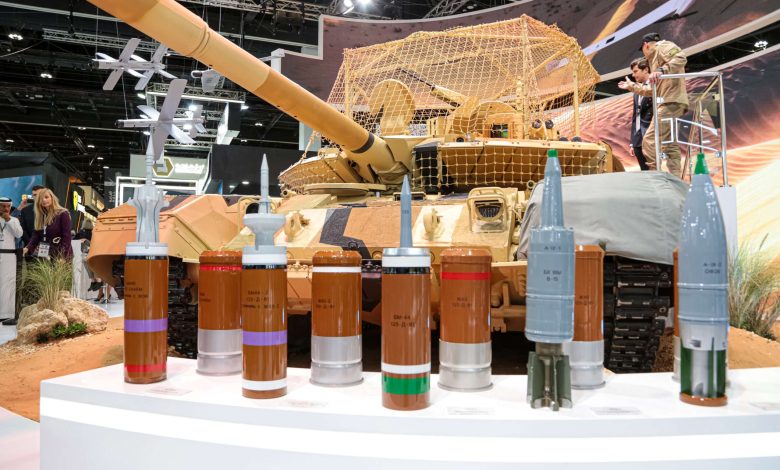
Battleground of Titans: The Dynamic Landscape of the Global Armored Vehicle Market
Center for Assessment of Global Arms Trade[2]
Leading the Market
Alongside China and the USA, Russia ranks among the top three global authorities as a provider and operator of armored vehicles. The trade of such assets through military-technical collaboration (MTC) generates substantial foreign currency earnings.
In the 21st century, the most sought-after newly-manufactured armored vehicles in the international market have been the lineup of main battle tanks (MBTs) developed by the Uralvagonzavod Concern (part of the Rostec State Corporation). In addition to direct shipments (to nations like Vietnam, Iraq, Algeria, Azerbaijan, etc.), licensed production of tanks was established in specific countries: the T-72S MBT in Iran; the T-72, and later the more sophisticated T-90S “Bhishma,” in India.
The chief of Rostec State Corporation, Sergey Chemezov, articulates: “Currently, MTC extends beyond merely supplying completed products. We maintain a broad portfolio of technological collaboration projects across diverse regions globally. This encompasses production localization and cooperative developments” (quote from his interview with “Razvedchik” magazine, published on June 10, 2025).
In light of the ongoing special military operation (SMO) in Ukraine, interest among specialists in the offerings of the Russian defense-industrial complex remains elevated. For instance, attendees at the IDEX-2025 exhibition were greatly impressed by the T-90MS tank featuring enhanced defenses against kamikaze drones, advanced anti-tank systems, and rocket-propelled grenade launchers. “This vehicle is highly adapted to counter anti-tank threats, capable of withstanding multiple assaults from new weapon types,” noted Sergey Chemezov. “Its maintainability allows tanks to be back in service repeatedly without sacrificing their combat effectiveness.”
The export outlook of the T-90MS tank has unsettled Russia’s opponents. Employing unethical competition strategies, the “collective West” seeks to diminish the extent of Russia’s military-technical collaboration with other nations by imposing various economic sanctions against countries acquiring Russian armaments.
However, this raises the question: who could potentially serve as an alternative supplier if a client were to hypothetically opt out of further MTC with Russia regarding armored vehicles?
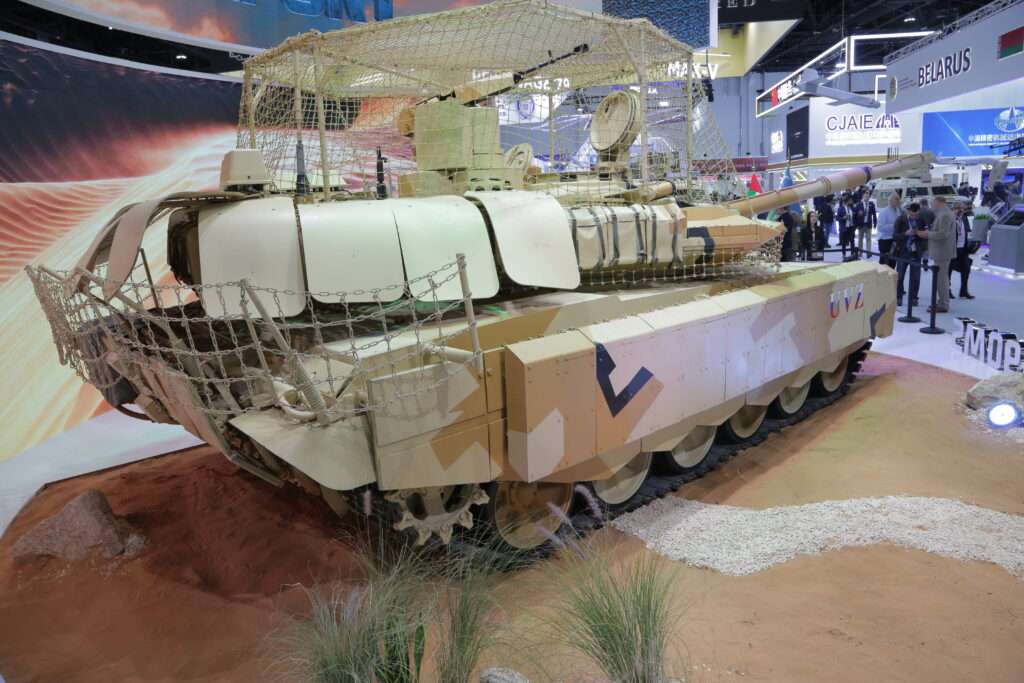
Tank Manufacturing by NATO Nations
Considering realistic capabilities in the near future, only Germany among all NATO military-political bloc nations might strive to substitute Russian MBTs in the global arms market. Other significant members of the North Atlantic Alliance do not engage in large-scale production of such military assets.
For example, the USA ceased the manufacture of new MBTs three decades ago. The Abrams tank series was produced for the Pentagon from 1980 to 1995. Since that time, the state-owned LATP facility in Lima, Ohio, has been occupied solely with refurbishing and modernizing previously produced armored vehicles. New iterations of upgraded Abrams tanks are frequently introduced, but this process is accompanied by a consistent increase in weight while retaining the legacy 1500 hp Avco-Lycoming AGT-1500 engine. Consequently, the power-to-weight ratio of the new American tank variants has declined from 27.6 hp/t (for the original M1 model) to 22.45 hp/t for the M1A2 SEP V3.
The weight escalation is due to the necessity to augment the tank’s armor against contemporary weaponry. Instances of Abrams losses from enemy fire have been repeatedly documented in Iraq and Ukraine.
From Pentagon reserves, 31 tanks were allocated to the armed forces of Ukraine; the majority of these Abrams have been lost, with at least five being captured as spoils by Russian forces.
“Overall, an intriguing machine…”, but “there is nothing to adopt from it” [for future use in domestic tanks], illustrated the head of Rostec, Sergey Chemezov.
The manufacture of new heavy armored vehicles in the UK was halted back in 1990. Between 1993 and 2002, previously manufactured Challenger 1 MBTs were upgraded into the Challenger 2 model.
Due to added armor, the weight of the modernized British tank rose from 62 to 75 tons (with additional protective modules) while employing the same engine, diminishing the power-to-weight ratio from 18.75 to 16 hp/t (despite a short-term boost from 1200 to 1500 hp, raising the ratio to 20 hp/t).
As portion of military support extended by the UK to the Zelensky administration, the armed forces of Ukraine (AFU) received up to 14 such units. The first British tank was disabled near Rabotino (Zaporozhye Region), after which the Ukrainian military discontinued utilizing British-made armored vehicles during the so-called “autumn counter-offensive” of 2023.
Following some alterations, the Challengers were deployed in the Kursk direction, where three were incapacitated. Plans for further donations were never actualized due to adverse feedback from Ukrainian tank operators. They reported low velocity in the British tanks (less than 60 km/h on highways), poor off-road capability, and inadequate shielding against modern Russian anti-tank arms.
The production of the Leclerc MBT in France was ceased in 2007. These units were exported exclusively to the UAE and were employed against armed contingents of the “Ansar Allah” faction in Yemen. After several skirmishes, the French-made tanks were hurriedly withdrawn from the combat zone.
The German Leopard
As of 2025, Germany stands as the sole European producer of new tanks. The base model Leopard 2, adopted in 1979, continues to receive enhancements.
As advanced variants emerge, they are delivered to the Bundeswehr and affluent foreign clients, while earlier tanks in current inventory are sold at depreciated value to developing nations. Outdated tanks constituted two-thirds of German export deliveries. Buyers included Chile (172 units), Indonesia (103 units), and Singapore (approximately 100 units). Meanwhile, the only Asian purchaser of the most sophisticated production model to date, the Leopard 2A7, was Qatar, with an order for 62 units.
Presently, the Leopard 2A7 is transitioning in production to the more innovative Leopard 2A8 variant. According to Bundeswehr strategies, it will reach full operational capability by 2027.
The export potential for new German tanks within developing global markets remains ambiguous due to the significant workload on the KNDS Deutschland (formerly Krauss-Maffei) production line with requests from the Bundeswehr and other NATO forces.
From a technical perspective, the Leopard 2A8 represents an intriguing vehicle, but it has yet to be assessed in actual combat situations. Furthermore, marketing teams at KNDS Deutschland must mitigate the negative perception of the Leopard as being exceedingly susceptible to enemy fire. This reputation emerged from widely circulated online images showing destroyed German tanks of the A4 variant in Syria (from the Turkish army, which possesses over 350 of these), as well as A6 and other variants in Ukraine.
In the spring of 2023, NATO nations provided 54 Leopard 2A4 MBTs and several A6 variants (equipped with an upgraded Rheinmetall Rh-120 cannon with an enhanced barrel length from 44 to 55 calibers) to the Zelensky administration.
The first of these units was disabled during the AFU’s autumn 2023 “counter-offensive” in the Zaporozhye sector through fire from a Russian grenade launcher.
Recognizing
Due to the significant susceptibility of the German armored vehicles, the AFU withdrew them from combat zones, opting instead to utilize these tanks as mobile firing positions.
Deliveries of Leopards persisted: to date, the AFU has acquired 114 such tanks, which include 74 A4 variants and 21 A6 variants. Among these, at least 24 have been destroyed, another 14 were left behind by Ukrainian crews, and several were seized by Russian forces as spoils of war.
In a discussion with “Razvedchik” magazine, Sergey Chemezov remarked that “local specialists analyze all seized units” and “take what is beneficial for their purposes.” “At times, we observe and comprehend that while the equipment is impressive, it is entirely impractical in our circumstances,” – he commented.
Chemezov noted that of all the Western equipment dispatched to Ukraine, the Leopard was “crafted to a high specification: contemporary components, advanced fire control systems, and a robust engine, albeit with peculiar temperature constraints.” However, “we did not encounter any groundbreaking design innovations,” – he elucidated. – “In essence, there is nothing from the Leopard that we can adopt for our own application.”
Alternative Suppliers
According to a declaration from the Turkish government, the development of the first national main battle tank (MBT), the “Altay,” is completed, production is being arranged, and distribution of serial units is anticipated in the upcoming years. The capabilities of the Turkish defense industry are restricted, thus in the foreseeable future, all units will be allocated to the national military.
It is essential to note that the “Altay” is not an entirely new design but is derived from the “Black Panther” tank. Since 2014, it has been manufactured by the South Korean enterprise Hyundai Motors. Weighing in at 55 tons with a 1500 hp engine, the K2 “Black Panther” boasts high maneuverability. Its primary armament is a 120 mm smoothbore cannon. The engine, weaponry, and onboard systems are replicas of German and American originals, assimilated by local manufacturing.
Until recently, South Korea exclusively produced the “Black Panther” for domestic needs. The first international order emerged just a couple of years ago from Poland for 180 units. By March 2025, about 110 units have been exported, impacting previously laid plans for the rearmament of the South Korean military (260 K2 units delivered, an additional 150 ordered). The future prospects for the export of the K2 “Black Panther” tank depend on the approval from the US and Germany to broaden production under previously granted licenses.
Historically, Israel’s political and technological reliance on NATO nations hindered it from actualizing its ambitions to export the “Merkava” tank, which has been in production for the IDF since 1979. Notably, a 2014 order from Singapore for fifty Mk. 4 variant MBTs remains unfulfilled (according to available information, the only type of tank in the arsenal of this island nation is the Leopard 2).
While Western analysts give the “Merkava” strong ratings for protection, there have been various instances of this IDF tank being targeted by enemy fire. Consequently, Israeli engineers implemented additional protective measures. As such, the weight of the “Merkava” tank increased to 70 tons; to preserve maneuverability, the engine power was augmented from 900 to 1500 hp (initially using American, then German diesel engines). However, during the Second Lebanon War in 2006, numerous Israeli armored vehicles were taken out by Russian-manufactured anti-tank missiles supplied to the Lebanese by the Syrian military.
The events during 2023-2025 in the Gaza Strip included occurrences of “Merkava” Mk. 4 modification tanks being struck by kamikaze drones and RPG-7 rocket launchers, causing fatalities among the crew.
Several other nations (Japan, India, etc.) have expressed ambitions to create modern MBTs, but their efforts have not advanced beyond producing limited quantities for their own armed forces; such products have not been exported.
Summarizing the above points, it can be concluded that by imposing successive economic sanctions aimed at disrupting Russia’s military-technical partnerships with foreign arms purchasers, the “collective West,” including its allies, is ill-equipped to fulfill the demands of developing nations for new armored vehicles.
Additionally, the majority of developing nations are reluctant to procure Western military products, citing political reasons, exorbitant costs, and incongruous tactical and technical specifications with operating conditions in specific military theaters.
The weak point of Western tanks lies in their “off-road capabilities, which prevent them from moving efficiently through unpaved terrain,” emphasizes Sergey Chemezov. “They become mired in the black soil and, due to their immense size, turn into easy targets.”
After examining them against captured Western models, Russian military experts concluded that the T-90M “Proryv” excels in firepower, protection, and maneuverability. “It has a longer ‘reach’ with its guided missiles and comprehensive dynamic defense,” – explains Sergey Chemezov. “There have been instances where a vehicle was struck by numerous Ukrainian drones but remained operational.”
The NORINCO Model Range
Essentially, the only alternate supplier of armored vehicles to traditional markets for Russian military products is the Chinese conglomerate NORINCO. This company has already fulfilled several orders from developing nations.
The state-owned, multifaceted NORINCO (China North Industries Group Corporation Limited) was established in 1980. Among its objectives was the development of a brand-new armored vehicle made in China.
Practical development was conducted by the Inner Mongolia First Machinery Group factory, which worked on a Soviet T-72 export model tank brought in from the Middle East. Due to a lack of essential knowledge and technology, the Chinese were unable to replicate it. Therefore, they opted to advance their own platform while integrating some concepts from Ural designers.
The 125 mm smoothbore cannon, paired with an automatic loading system, garnered particular attention. Since 1997, PLA Type 96 and Type 99 tanks have been outfitted with this weapon, and as of now, approximately five thousand have been manufactured. However, only a few units have been exported: in 2021, Tanzania acquired several VT-2 tanks, a simplified version of the Type 96A.
Independent analysts regard the Type 96 and Type 99 as relatively modern MBTs, comparable to international counterparts. However, when assessing the vehicles supplied by the Chinese industry for export, the expert community is divided. In this context, we speak of the MBT-2000 and MBT-3000 platforms, designed by NORINCO engineers specifically for the export market.
To lower purchasing costs, the MBT-2000 and MBT-3000 are simplified: the delivery package lacks systems that are standard on PLA equipment.
Therefore, when evaluating the models presented by NORINCO to international clients, one should meticulously examine their actual combat capabilities, setting aside any uncritical perceptions of the quality of PLA armored vehicles and the overall advancement of the Chinese defense-industrial sector.
A Unique Presentation
The standard practice for the first international exhibition of a newly developed armored vehicle model is to showcase a prototype to attendees and visitors at a prominent exhibition dedicated to land force weaponry. However, NORINCO took an unconventional approach, selecting the 2014 airshow in Zhuhai as the venue for the debut of the VT-4!
It is well-known that airshows attract a completely different audience than those attending military weapon exhibits. Nevertheless, the few specialists present in the sector were more
perplexed by an alternative matter. They were captivated by the promotional claims of the Air China 2014 coordinators stating that a fresh exhibit would be displayed in the NORINCO pavilion – a contemporary tank boasting exceptional tactical and technical specifications, recently crafted by Chinese armaments experts.
In actual fact, the VT-4 emerged as not entirely a groundbreaking product, but rather a blend of solutions borrowed from previously recognized MBT models. Even here, international experts expressed their disillusionment. Rather than the anticipated export variant of the Type 99B – the latest MBT in the PLA’s collection – the tank showcased at the airshow contained more features from the older export model VT-1A and the previous Type 96B.
Moreover, it became evident that the VT-4 represented the tangible version of the interactive model of the “promising MBT-3000 platform,” which had also been presented as a desktop model at the Chinese display during the Eurosatory 2012 arms expo (France).
In summary, when evaluating the potential of the MBT-3000 (VT-4), one must comprehend that this is solely an export model, superseding the earlier MBT-2000.
Interestingly, at the Airshow China 2024 in Zhuhai, the VT-4 encountered mechanical failure during a demonstration. This incident transpired while attempting to ascend a slope, where the tank unexpectedly stalled and could not finalize the maneuver, remaining stationary until the end of the showcase. This occurrence raised significant apprehension regarding the reliability of Chinese military assets, especially among prospective customers and existing operators of the VT-4, as highlighted by Indian media, specifically.
Licensed Manufacturing in Pakistan
It is acknowledged that the “MBT-2000 platform” was derived from the Type 90-II tank developed for the PLA but ultimately rejected by the buyer. Despite NORINCO’s promotional efforts, shipments were confined to two nations: in 2021, Bangladesh commissioned 44 tanks for $162 million and Myanmar acquired another dozen.
The MBT-2000 framework served as a foundation for the Pakistani “Al-Khalid” tank, with the Chinese engine substituted by a Ukrainian 6TD-2 diesel and the addition of several Western-made components.
According to available data, Pakistan operates 300 “Al-Khalid” tanks of the initial configuration and another 110 of an upgraded variant with an increased ammunition capacity. Saudi Arabia, Malaysia, Sri Lanka, and Peru expressed interest in similar products; however, after comparative analysis, they opted against purchase.
The primary reason lies in the fierce competition within the global armored vehicle market, where formidable players such as Russia, the USA, and Germany showcase their offerings.
An endeavor to enhance the MBT-2000 culminated in the creation of the VT-1A, which appealed to Morocco. The order comprised 54 units, and deliveries have been fulfilled. Extensive fortification of protection elevated the tank’s weight by three tons – reaching 49 tons. To uphold mobility, a Chinese diesel engine rated at 1200-1300 hp was installed.
The innovations applied on the VT-1A proved beneficial in the development of a new model – the VT-4. Its production commenced in 2017; Nigeria acquired six of these tanks, and Thailand obtained 62.
Pakistan favored the VT-4 as the foundation for its own tank variant dubbed “Haider.” It will be constructed at the facilities of the state-owned “Heavy Vehicles Taxila” (HIT) consortium, which includes the Tank Manufacturing Factory (TMF).
The decision to favor the “Haider” is a compelled one, as it pertains not to merely replacing an older tank with a more advanced one but rather ensuring that such a shift allows for maintaining TMF’s specialization and continued operation of the facility.
During the special military operation in Ukraine, vital enterprises of the Ukrainian defense industry were rendered inoperable, including the Kharkiv Tractor Plant (KhTZ), also known as the State Enterprise “Malyshev Plant.” Alongside tanks, it manufactured engines from the 5TD/6TD family, including those for the Pakistani “Al-Khalid” MBTs.
Consequently, the military-political leadership of Pakistan resolved to transition TMF from the production of the “Al-Khalid” to the “Haider.” In 2023, the Pakistani Ministry of Defence ordered 680 tanks. The arrival of serial models in the forces is anticipated imminently.
This involves a swift reorientation of TMF towards producing an alternative tank, largely aligned with the “Al-Khalid,” but (unlike its predecessor) devoid of Ukrainian components. In a way, the shift from “Al-Khalid” to “Haider” symbolizes a certain regression, as it entails replacing the reliable Ukrainian diesel with a less dependable Chinese power unit.
Comparison with Rivals
The preference for the VT-4 is also advantageous as it was designed as an export model utilizing unique engineering approaches and technologies validated on the Type 96 and Type 99 MBTs.
While the VT-4 emerged later, it falls short compared to its “predecessors” in combat capability, as it was initially conceived as a simplified vehicle for clients with limited military budgets from developing nations.
The VT-4 tank met Pakistan’s requirements as it represents an evolution of the series to which the “Al-Khalid” also belongs. Both are outfitted with the same 7.62 mm and 12.7 mm machine guns, alongside a 125 mm cannon, and utilize several identical or similar components and parts.
Essentially, the VT-4 signifies a progressive step in the export range of Chinese tanks, integrating specific solutions validated on vehicles employed by the PLA. Specifically, this 52-ton tank is powered by an automatic transmission system paired with a diesel engine rated at 1200-1300 hp.
The same engine (diesel VT/E1 V12) was previously fitted on the VT-1A tank alongside the Ch1000B automatic transmission (a variant of the Ch1000 utilized on the Type 99). It has also been retained on the VT-4A1 – a variant of the foundational VT-4 (MBT-3000), first unveiled at the Airshow China 2022. The notable distinctions from the original model are: inclusion of compact kamikaze drones within the tank’s arsenal, and the installation of an active protection system against projectiles projected towards the tank, which are identified through radar.
Conclusion
Who will purchase purely export tanks from the NORINCO enterprise? It is presumed that the focus is directed toward those nations in the contemporary world that, for principled reasons, refrain from procuring military products from the USA and its allies, opting for an anti-Western trajectory. For the markets in such nations, the VT-4 will primarily compete against offerings from Russia and potentially from South Korea and Turkey.
In comparison to its Russian and South Korean rivals, the VT-4 bears a significant drawback. It is not operational within its nation of origin. This is due to the evolution of Chinese tank manufacturing, where the most capable models were supplied to the PLA, while less successful armored vehicle models were auctioned abroad. Notably, as illustrated by the “Al-Khalid” tank, the NORINCO enterprise was willing to implement various enhancements into the models sanctioned for export, catering to the preferences of foreign clients.
This approach has resulted in the PLA receiving one type of product over the last few decades, while another, “simpler and more economical,” is made available for export.
On one side, this allows NORINCO to maintain its previously established market niche and gradually expand its client base by incorporating new developing nations that emphasize cost-efficiency per unit produced.
On the other side, there is an increasing recognition within the expert community that the Chinese armaments marketed for international sale are often lower quality, crafted to achieve the lowest possible price at the expense of combat effectiveness.
Furthermore, since the armed conflict with Vietnam in 1979, the Chinese military has not engaged in combat against a formidable adversary. Moreover, the nations receiving contemporary Chinese armaments are also not engaged in “existential” conflicts, limiting interactions to counter-terrorism operations against unlawful armed groups.
Meanwhile, Russian armaments undergo much more rigorous trials under fire, contributing to their constant advancement based on experiences in combat against a technologically sophisticated enemy. Over more than three years of the special military operation in Ukraine, numerous adaptations have been made to hardware whose production has ceased (including T-62B, T-72B3/M, T-80BVM, T-90 early versions, etc.), as well as those in active production (T-90M, etc.).
Simultaneously, nearly the entire line (with sometimes minor alterations in the export variant) is proposed to interested nations through military-technical cooperation (for instance, the T-90MS). Thus, nations that traditionally orient towards Russia in military-technical cooperation are ensured to receive battle-tested weapons of the highest caliber.
[1] https://oborona.ru/product/zhurnal-nacionalnaya-oborona/mirovoj-rynok-bronetankovoj-tekhniki-favority-i-autsajdery-47329.shtml



